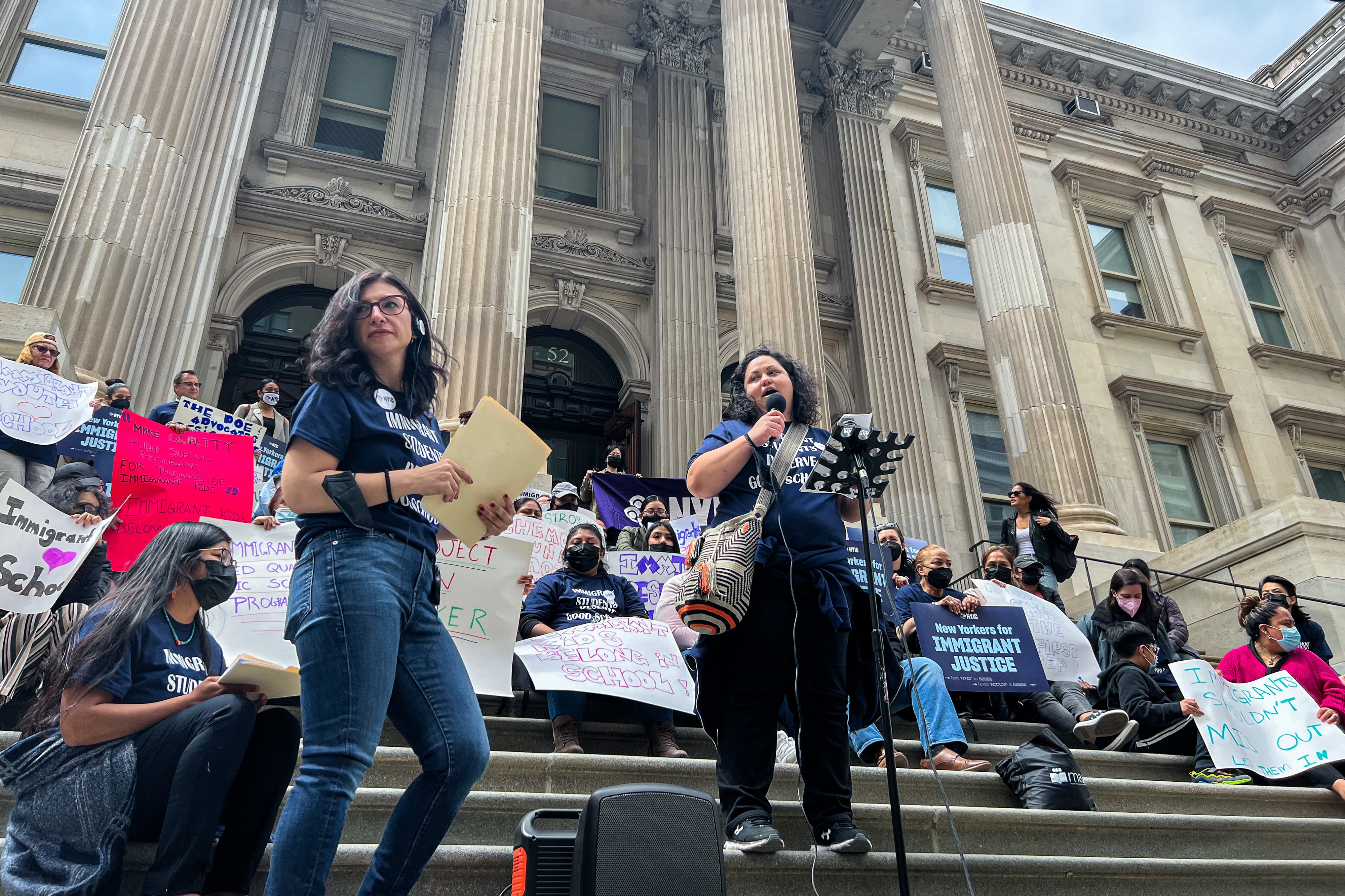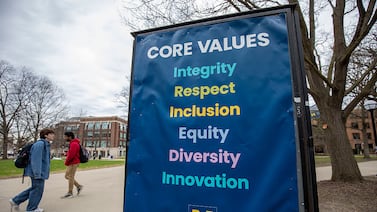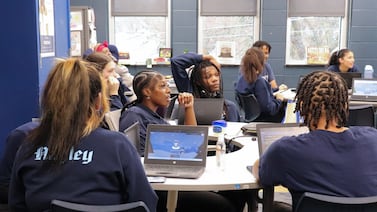New York City education officials are planning to expand the number of transfer high schools that can serve students learning English as a new language, using a Bronx school for newcomer immigrants as one model, according to a top department official.
The city shared few details but the move could be an answer to calls from advocates who want more support in Brooklyn, Queens, and the Bronx for new immigrant students, who can struggle to find schools that fit their academic needs and ultimately may not graduate on time or even stay in school. The city defines a newcomer immigrant student as someone who has been in the United States for three years or less, but officials did not specify whether other English learners would qualify for the seats.
The Education Collaborative has been pushing for such an investment since before the pandemic, arguing that newer immigrant students may be juggling work and family responsibilities, know limited to no English, or have gone years without formal education before arriving in New York, but cannot find high schools that meet their academic and social-emotional needs. These advocates have been working with education department officials to craft a pilot program that would place more English-as-a-new-language teachers and bilingual social workers in some of the city’s existing transfer schools, which are designed for any student not on track to graduate on time. Sixteen percent of English language learners dropped out last year, compared with 5% of all city students.
A primary goal of the pilot is to bring more intensive support to schools in neighborhoods where immigrants actually live. Four of the five existing transfer schools that serve students learning English as a new language are located in Manhattan, and one is in the Bronx, even though the majority of newer immigrants, ages 14-21, live in the Bronx, followed by Queens and Brooklyn, according to Census data analyzed by the Migration Policy Institute.
In April, department officials said they have been working with advocates on the idea, but any decisions will include “input from our superintendents, school leaders, and communities.” On Tuesday, Deputy Chancellor Carolyne Quintana said the city is planning to “expand the number of transfer schools that currently serve the needs of our English language learner population” in the upcoming school year. She pointed to English Language Learners and International Support Preparatory Academy in the Bronx as a model to follow. ELLIS Prep is one of the city’s five transfer schools for English learners and specifically serves newcomers.
Quintana told City Council members they want to develop individual schools down the road that serve these students “and wherever possible…design or find existing transfer schools so that they can meet the needs of our English language learners by using models that are already successful.”
The Education Collaborative’s proposed pilot program would cost $8.2 million over three years to reach 400 newcomer immigrant students, with $2.1 million next school year alone. The money would be infused into a handful of existing transfer schools in the Bronx, Brooklyn, and Queens. In addition to ENL teachers and bilingual social workers, the money would cover overtime for teachers planning summer and after-school programs, training for current teachers to work with newer immigrant students, student internships, wraparound support provided by community-based organizations, and enrichment programs for students who are two or more years below grade level in their home language in literacy, math, or both.
The education department is looking at districts where programs like ELLIS Prep don’t currently exist and “working very closely with our school design folks to make those decisions and to build those out as soon as we can,” Quintana said.
A department spokesperson declined to answer questions about Quintana’s comments, including whether she was referring to the pilot that advocates are proposing, saying only, “More to come soon.”
Advocates — who held a rally on the education department’s front steps Wednesday in support of the city expanding these programs — were surprised by Quintana’s comments. Officials haven’t confirmed to advocates that they will be expanding these programs, but have previously said they’re “committed” to making them work, said Andrea Ortiz, education policy manager at the New York Immigration Coalition, who has been working on the pilot program proposal.
“We haven’t heard anything about new schools, but we will take them if they come,” Ortiz said. “We know that’s a longer-term process — it might take a few years to find funding for that. That’s why the pilot program was a great first step: We can create a model, and then if we have the funding and we have the energy for a new school, then we know what to do and how to implement it.”
ELLIS Prep Principal Norma Vega said she was “grateful” that her school is being considered a model, but she hasn’t heard anything from department officials about helping to duplicate it. Department officials visited her school last month, she said, but this initiative was not mentioned.
Rather than creating individual programs, Vega thinks the city should focus on creating dedicated new schools like hers for new immigrants, primarily because she thinks the principal should be solely focused on that student population since they can have varying degrees of high needs.
But with dipping enrollment, it may be tough for city officials to justify opening new schools.
“If the leader doesn’t feel passionate about it, then it’s not going to work,” Vega said.
Reema Amin is a reporter covering New York City schools with a focus on state policy and English language learners. Contact Reema at ramin@chalkbeat.org.






